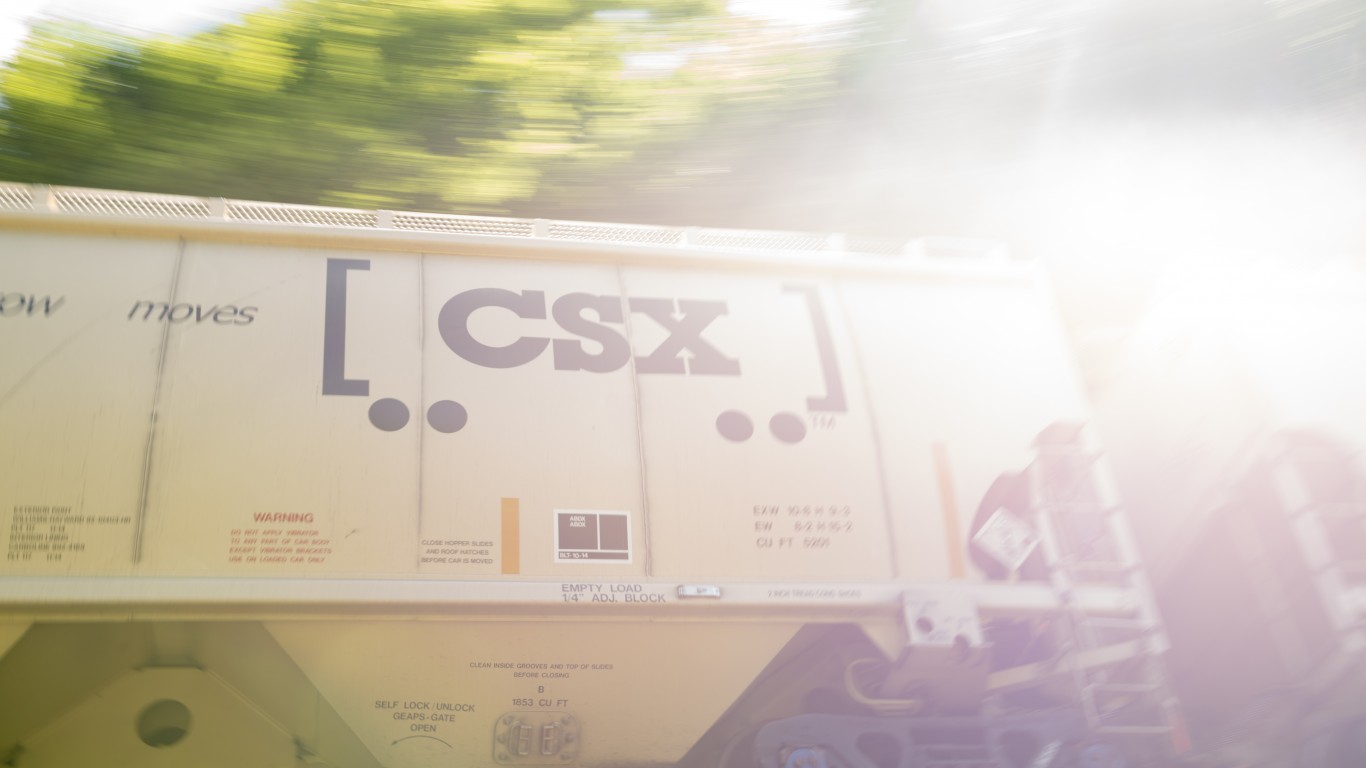
CSX Corp. (NASDAQ: CSX) initially got railed by the COVID-19 as the pandemic put a real strain on supply lines across the world. However, as the markets are recovering handily CSX stock is back on track and holding close to its February highs.
The S&P 500 and Dow Jones industrial average have rallied since their trough in mid-March. CSX stock bottomed around $47, but has recovered to nearly $77 in this time. Even though there is still much uncertainty tied to the coronavirus and social upheaval within the United States, the worst appears to investors to be over and CSX is chugging along.
May Railroad Numbers
The Association of American Railroads (AAR) recently reported U.S. rail traffic for the week ending May 30 as well as volumes for the month of May. Total U.S. weekly rail traffic was 395,714 carloads and intermodal units, down 17.3% compared with the same week last year.
Total carloads for the week came to 179,973, down 24.2% compared with the same week in 2019, while U.S. weekly intermodal volume was 215,741 containers and trailers, down 10.6%.
By segment, total combined weekly rail traffic in North America came in at 557,771 carloads and intermodal units, a decrease of 16.5%. North American rail volume for the first 22 weeks of 2020 was 13,698,214 carloads and intermodal units, a decrease of 11.6% versus the same period last year.
In terms of the monthly numbers, U.S. railroads originated 740,171 carloads, a decrease of 27.7% versus May 2019. In the same time, U.S. railroads also originated 912,922 containers and trailers in May 2020, a decrease of 13%. Combined U.S. carload and intermodal originations in May 2020 were 1,653,093, down 20.2%.
Total U.S. carload traffic for the first five months of 2020 was 4,713,757 carloads, a decrease of 14.7%; and 5,186,630 intermodal units, a decrease of 11.3% from last year.
Fundamentally Sound
CSX released its most recent earnings report in April, and while it showed real pain, this may only be temporary.
Although the first quarter earnings showed some fundamental weakness, it wasn’t as bad as initially thought. CSX withdrew guidance, but that was par for the course considering market uncertainty, and analysts seem fairly positive on the company.
In the first quarter, net income dropped by 8% to $770 million, but CSX noted its operating ratio was 58.7%, an industry record best for the first quarter. It’s worth pointing out here that a railroad’s operating ratio is nothing more than total expenses divided by revenue. Operating expenses dropped by 7%, larger than the 5% drop in revenue.
CSX reported earnings per share of $1.00, coming in above the Wall Street consensus of $0.94. However, this was short of last year’s number of $1.02.
Looking ahead to the fiscal second quarter, analysts are calling for $0.70 in EPS on $2.39 billion in revenue. The same period last year had $1.08 in EPS and $2.98 billion in revenue. Although most of the economic lockdown occurred in the second quarter, CSX could power through this just as it did in the first quarter.
Ultimately, the second quarter estimates are incredibly dependent on how well CSX controls its expenses. During the first quarter, CSX reduced labor and benefit expenses by $66 million because it cut some 1,600 employees. Also fuel expenses dropped by $41 million as a result of lower consumption and lower price per gallon. These expense reductionss could very well continue into the second quarter and then some.
CSX shares traded higher in response to the April earnings report and have only risen since then. A reopening in the economy and strength in the market generally have been contributing factors. With an incredibly positive May Employment report from the Bureau of Labor Statistics today, the markets are rising again. As more optimism pervades the economy it will surely be a boost to rail traffic and to CSX.
Is Your Money Earning the Best Possible Rate? (Sponsor)
Let’s face it: If your money is just sitting in a checking account, you’re losing value every single day. With most checking accounts offering little to no interest, the cash you worked so hard to save is gradually being eroded by inflation.
However, by moving that money into a high-yield savings account, you can put your cash to work, growing steadily with little to no effort on your part. In just a few clicks, you can set up a high-yield savings account and start earning interest immediately.
There are plenty of reputable banks and online platforms that offer competitive rates, and many of them come with zero fees and no minimum balance requirements. Click here to see if you’re earning the best possible rate on your money!
Thank you for reading! Have some feedback for us?
Contact the 24/7 Wall St. editorial team.
 24/7 Wall St.
24/7 Wall St.